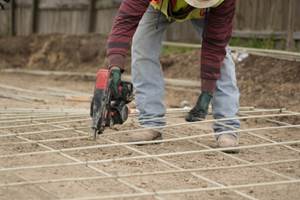Composites for aging and disabled populations
Contributing columnist Gary Talbott shares thoughts on how undervalued composites are as tools to help seniors and people with disabilities.
I’ve spent most of my engineering career trying to find new ways to make transportation more accessible for seniors and people with disabilities. I managed the General Motors’ Mobility Center from the late 1990s to late 2004. I then worked at Disney for a few years, helping make rides, attractions and transportation more accessible. Next, I moved tCoo the Boston area and developed the System-Wide Accessibility Department for the Massachusetts Bay Transportation Authority (MBTA), a multi-modal public transportation provider. And for the past six years, I’ve had a similar role at Amtrak, trying to make America’s national passenger-rail system, including trains, stations/platforms, etc., accessible to customers with disabilities.
Over the years, I’ve worked with many materials and processes. What I’ve learned is just how undervalued composites are as tools to help seniors and people with disabilities get out of their homes — attend school or church, go to work, run errands, visit family and friends — and become better integrated into our society. That’s not an inconsequential goal when you consider that up to 75% of people with severe disabilities in this country are either unemployed or underemployed, and an increasingly large percentage of our citizens are entering their “golden years” when visual and hearing acuity and the motor skills necessary for mobility begin to deteriorate. The quality of life for seniors and people with disabilities can be greatly improved by increasing their visitability (ability to visit the outside world).
I’ve spent the past couple of years leading a program to develop a lighter, safer, more feature-rich means for this group to get on and off trains. At Amtrak, we call these Accessible Boarding Technologies (or ABTs). ABTs help bridge the gap between a railcar and a platform. Shorter ABTs, called bridgeplates, are used when train and platform are at similar vertical heights. Longer ramps are used when the vertical heights of the train and platform differ. Bridgeplates and ramps help customers who use wheeled mobility devices, as well as seniors and those who must push strollers or pull wheeled luggage get on/off trains quickly and safely.
Current bridgeplates are often made from diamond-plate or other aluminum structures. Longer ramps can be channel aluminum sections, and hinged in the middle due to the mass of each section. Both units can be heavy and, therefore, take a toll on crews that lift, carry and then deploy them. Weights range from 35 lb/16 kg for a short bridgeplate up to 70 lb/32 kg for a ramp without handrails. To limit their weight, they were shorter in length and narrower in width, and they were often slippery when wet. Redesigning bridgeplates and ramps in carbon fiber composites has significantly reduced their overall weight, despite increases in length and width and the addition of integrated folding handrails to the ramps. We simply couldn’t have done this in metals. Only composites provide the stiffer, stronger, more durable designs that permit weight reduction and the parts integration that enables manageable production costs. As we begin to deploy carbon fiber composite ABTs across our network, our hope is that they will make passenger rail more accessible to more people.
Given all the smart and creative people in this industry, how else could we use composites to help seniors and people with disabilities gain more autonomy? What about lightweight, modular telescoping composite ramps that increase visitability by enabling access across stairways, at the homes of family and friends who don’t have an accessible entrance?
And how about the wheeled mobility devices themselves — technology that, in some cases, hasn’t been revisited since the 1960s? Right now, an occupied power wheelchair can weigh 1,000 lb/454 kg or more, making transitions from house to van, bus or train, to office building or store and back again very difficult. Couldn’t we apply what we’ve learned designing electric vehicles to make power-based wheeled mobility devices lighter and more durable, with extended-life battery packs? And what if the devices could be folded or disassembled without tools? Could they be stowed in smaller vehicles that didn’t require a hoist and/or lift?
Molders who turn out bicycles and sports car accessories could help us convert heavy aluminum and steel wheelchair parts and wheels into lighter composites.
The same goes for canes, crutches and rollators (rolling walkers). The latter can weigh 25-35 lb/11-16 kg. If they were lighter and could be stowed more compactly and redeployed easily, many users could exercise greater independence when traveling.
Anyone game to take on these challenges?
Related Content
CCG meets customer demand with StormStrong utility pole lineup
Additional diameters build on the portfolio of resilient FRP pole structures for distribution and light pole customers.
Read MoreGatorbar, NEG, ExxonMobil join forces for composite rebar
ExxonMobil’s Materia Proxima polyolefin thermoset resin systems and glass fiber from NEG-US is used to produce GatorBar, an industry-leading, glass fiber-reinforced composite rebar (GFRP).
Read MoreRecycling end-of-life composite parts: New methods, markets
From infrastructure solutions to consumer products, Polish recycler Anmet and Netherlands-based researchers are developing new methods for repurposing wind turbine blades and other composite parts.
Read MoreCCG FRP panels rehabilitate historic Northamption Street Bridge
High-strength, composite molded, prefabricated panels solve weight problems for the heavily-trafficked bridge, providing cantilever sidewalks for wider shared use paths.
Read MoreRead Next
Developing bonded composite repair for ships, offshore units
Bureau Veritas and industry partners issue guidelines and pave the way for certification via StrengthBond Offshore project.
Read More“Structured air” TPS safeguards composite structures
Powered by an 85% air/15% pure polyimide aerogel, Blueshift’s novel material system protects structures during transient thermal events from -200°C to beyond 2400°C for rockets, battery boxes and more.
Read MoreAll-recycled, needle-punched nonwoven CFRP slashes carbon footprint of Formula 2 seat
Dallara and Tenowo collaborate to produce a race-ready Formula 2 seat using recycled carbon fiber, reducing CO2 emissions by 97.5% compared to virgin materials.
Read More




















